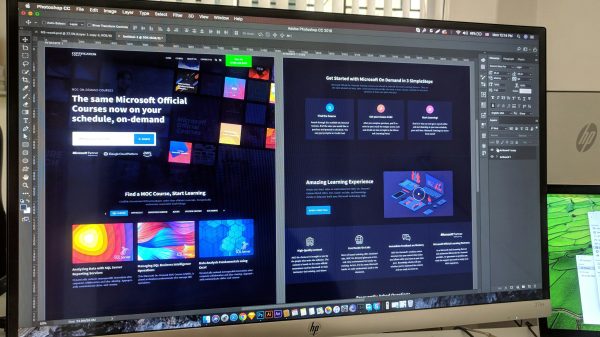Cloud computing is changing everything. From how we store our photos to how businesses run apps. Amazon Web Services (AWS) is at the center of this digital revolution. But learning AWS can seem hard—like learning a new language. Don’t worry, though. We’re going to make it simple and, yes, even fun.
TL;DR
Learning AWS doesn’t have to be scary. Take it step by step, like a video game. Start with the basics like S3 and EC2, then move up to Lambda and databases. Use practice, labs, and free tools along the way, and soon you’ll speak “cloud” like a pro.
Why Learn AWS?
AWS is the market leader in cloud services. Companies like Netflix, Airbnb, and NASA use it. Knowing how to use AWS is a superpower in today’s tech world.
Whether you want to become a cloud engineer, build your own app, or just stop saying “what’s an EC2?”, AWS is the place to start. Learning it gives you:
- Better job options
- Higher pay
- The power to build cool stuff
Start Here: The Basics
AWS has over 200 services. That’s a lot! But don’t panic. You only need to learn a few to get started.
Focus on the big five:
- Amazon S3 – store your files in the cloud
- Amazon EC2 – run virtual computers
- IAM – manage users safely
- Amazon RDS – set up databases fast
- AWS Lambda – run code without servers
Think of these as the building blocks of the cloud sandbox. Once you know what sand, water, and tools to use—you can build anything.
Step-by-Step: Learning AWS the Easy Way
1. Make a Free AWS Account
Head to aws.amazon.com/free. The Free Tier gives you enough to play and practice without spending money. Just be sure to shut things down when you’re done so you don’t get surprise charges.
2. Learn the AWS Console
The AWS Management Console is your dashboard. It’s like the cockpit of a plane. At first, all the buttons and terms may look confusing. But just like flying a drone, with practice, you’ll know what to click.
Start by navigating to simple services like:
- S3 – Try uploading a file
- EC2 – Launch your first virtual machine

3. Hands-On Labs
You learn better by doing, not just watching. Use platforms like:
- A Cloud Guru / Linux Academy
- Qwiklabs
- freeCodeCamp
These platforms offer scenario-based labs to reinforce what you’ve learned. It’s like a video game tutorial—it holds your hand until you’re ready to go solo.
4. Understand IAM
IAM stands for Identity and Access Management. It controls who (or what) can do what in AWS. It’s the safety gate around your services.
Create a new user, assign roles, and learn how to use permissions. It’s all about who gets to do what.
5. Play with EC2 and S3
Now that you know your way around, make something!
- Launch an EC2 instance and install a web server
- Host a simple HTML page on S3
- Try setting permissions
When you see your site live from your own cloud server, it feels like magic.
6. Try AWS Lambda
No servers. No setup.
With AWS Lambda, you can run code just by uploading a function. AWS handles the rest. It’s a peek into the future—where you focus only on logic, not infrastructure.
Try making a basic function that sends a greeting or logs data.
How Long Does It Take to Learn AWS?
If you spend just 30 minutes a day, you can be comfortable with the basics in about a month.
The trick is repetition. Rebuild the same things again and again. Try it blindfolded—not literally! But don’t fear making mistakes. Every error is a new lesson.
Certifications: Worth It?
Yes! AWS certifications open job doors. Especially if you’re just starting out or switching careers. Start with:
- AWS Certified Cloud Practitioner (Intro level)
- AWS Certified Solutions Architect – Associate (More technical)
You can study using official AWS resources, YouTube, or exam guides. The key is practicing what you read.

Tips to Stay on Track
- Set weekly goals. Example: “Launch EC2 by Friday”
- Join communities. Reddit, Discord, LinkedIn groups
- Break it down. 10-minute YouTube lessons beat 2-hour study marathons
- Make something fun. Like your own website or chatbot
AWS in Real Life
Once you’re confident with AWS, you can do amazing stuff:
- Host a personal blog fully on the cloud
- Build serverless apps fast
- Create automation scripts to save hours of work
- Help companies move off old servers and into the cloud
And those skills? They’re in very high demand.
Common Mistakes to Watch Out For
- Forgetting to shut off EC2 instances
- Skipping IAM policies—bad security!
- Trying to learn everything at once
- Not using your Free Tier wisely
Don’t rush. Learn like you’re building blocks. One step at a time.
Level Up: What to Learn Next
Once you’re comfortable with the basics, try advanced tools:
- CloudFormation – deploy infrastructure with code
- Amazon DynamoDB – powerful NoSQL database
- Amazon ECS and EKS – container tools
- AWS CLI – manage everything from your terminal
With these, you can build more complex, scalable stuff. You’ll be turning into a full cloud architect. Hats off!
You Got This!
AWS isn’t just for giants. It’s for learners. It’s for dreamers who want to build and deploy quickly. The key is to start small, break things, and have fun while learning.
In a few months, you’ll look back and laugh at how confusing EC2 used to sound. The cloud isn’t some mystical fog. It’s a playground. Now, go play!
































